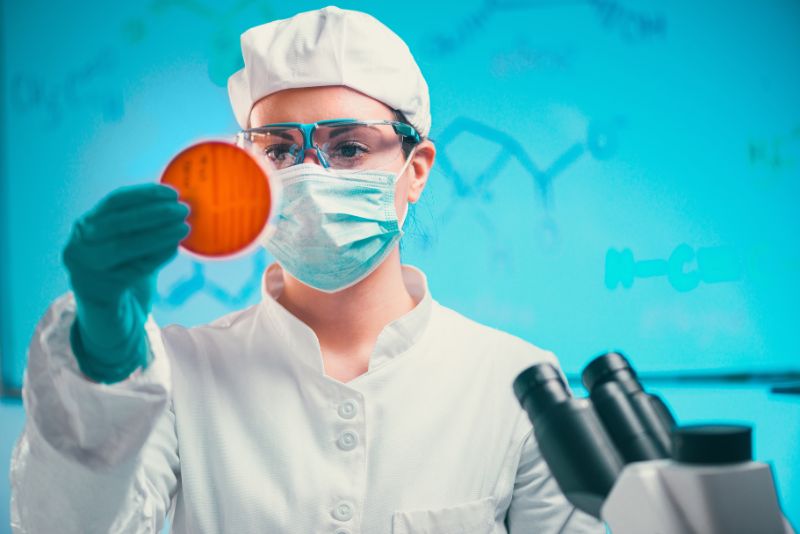Bacteria are tiny organisms that live all around us, in the air, in the soil and water, and on food, plants, and animals (including on and in our bodies). Except - you can’t see them! Bacteria is microscopic, and they’re everywhere, and some are good and some are bad. So where does harmful bacteria thrive? Where do you think they’re hanging out most? And what do you do to keep them at bay?
They’re on things we touch everyday
Guess what folks … a lot of bacteria are where they are because we put them there! And these days we’re a pretty reliable part when we don’t pay attention and forget about the new pandemic protocols!
Our hands are where bacteria travel from surfaces to people to other surfaces and to our faces. We all know that’s why soap and water handwashing is so important these days! So ... the things we touch most are often the nastiest things. Everyone knows the cellphone is high on the list of items covered with bad bacteria! But what else?
“Bacteria thrive on the things we touch frequently, like cell phones and remote controls - things that are rarely cleaned,” says Kelly Reynolds, PhD, a professor of microbiology and the director of the Environment, Exposure Science and Risk Assessment Center at the University of Arizona’s Mel and Enid Zuckerman College of Public Health in Tucson. (4) “Being aware of, cleaning regularly, and avoiding bacteria loaded hot spots is one strategy to avoid infections that can lead to colds, the flu, or other problems. The other important part is not letting the bacteria you are exposed to enter your body,” Dr. Reynolds adds. “Wash frequently and try not to touch your nose, mouth, and eyes.” Via everydayhealth.
What are the nastiest bacteria-loaded places in your home?
Where do you think bad bacteria thrive in your home? Many might suspect it’s the toilet that’s the worst - but that’s not always the case. Toilets may be one of the cleaner places in our homes, because we clean them regularly. The kitchen, the toothbrush holder, and the dog bowl are actually some of the real hot spots.
Kitchen sink
In the kitchen, the sink is a major bacteria hangout. We pick up bacteria on our hands from foods and liquids and any number of things that wind up in our sinks and faucets. The worst item in the kitchen is no surprise: your dish sponge! NSF International, an independent public health and safety organization, found coliform bacteria — a family of bacteria that includes Salmonella and E. coli and is an indicator of potential fecal contamination — on more than 75% of dish sponges and rags. How to clean a sponge:
- Get the sponge wet
- Heat it in the microwave for two minutes once a day (it comes out very hot, so be careful)
Other sponge germ-busting tips:
- Replace your sponge often. NSF advises getting a new sponge every two weeks or even more often.
- Rinse sponges well and keep them out of the sink so they can dry out between uses, as drying kills a lot of germs.
- Use dishcloths, towels, and rags rather than sponges. Why? Because they can be sanitized with your washing machine’s sanitizing cycle or with bleach.
Toothbrush holder
So like we said, in the bathroom, the toilet is not always where germs thrive – that distinction goes to your toothbrush holder! NSF found that toothbrush holders are the third most bacteria ridden household items after the kitchen sponge and sink.
An alarming 64% of toothbrush holders contained mold and yeast, 27% contained coliform and 14% contained staph. To protect your toothbrush holder:
- Close the toilet when you flush to prevent bacteria's’ air travel all over the bathroom.
- Keep your toothbrush holder as far away from the toilet as possible.
- On a weekly basis, put the holder in the dishwasher’s sanitizing cycle (assuming it’s dishwasher safe)
- Replace your toothbrush every 3 months.
Dog Bowl, Yes Fido’s Bowl is a veritable bowl full of bacteria
The same NSF study found the dog bowl to be the third worst thing in the house. It’s not surprising that this would be true. But knowing the pet bowl is the third most bacterial loaded item in the house is why you should not put your pet’s bowl on the kitchen counter next to tonight’s dinner!
The most acclaimed public bacterial hotspots
Non-smooth, warm and moist areas tend to create ideal conditions for thriving bacteria to grow and hide. Where do you think these are? In a recent study, NSF swabbed various surfaces in local schools and grocery stores to explore where nasty micro-organisms hide publicly. They found the highest level of bacteria in a playground sandbox. Not surprisingly, objects like drinking fountains and cafeteria trays had more microorganisms than commonly cleaned areas, such as bathrooms and gym mats.
What about grocery stores?
At the grocery store, dozens of people typically use any given shopping cart each day, which increases the likelihood of coming in contact with dangerous microbes. Germs like E. coli and coliform bacteria have been found to linger on the handles, seats, and the bottoms of shopping carts, according to research published in September 2014 in the European Scientific Journal.
And Banks?
At the bank, considering that 95 percent of people wash their hands improperly, according to Michigan State University researchers, ATM users tend to deposit something else besides their paychecks. One study found that each key on an ATM harbors an average of 1,200 bacteria, including E.coli and cold and flu micro-organisms, University of Arizona researchers report. We’ve all heard the recommendation to stash hand sanitizer in your car and scrub off as soon as you leave the bank. That’s of course if you don’t mind the chemicals in those products!
To keep nasty bacteria from thriving, add StayWell™ Copper to the mix. Even better, in our opinion, than carrying that hand sanitizer is to keep your hands clean with frequent and effective handwashing techniques, and carry your StayWell™ Copper with you at all times for that extra layer of bacteria-killing protection that antimicrobial copper naturally gives.
Shop StayWell Copper products today!



